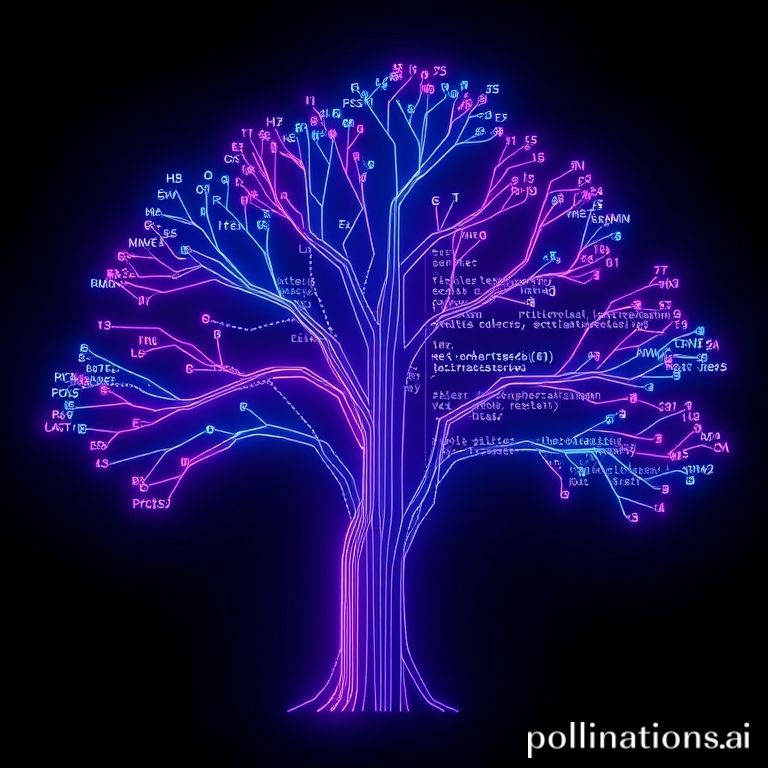Here is the complete, SEO-optimized, and engaging HTML blog post, crafted according to your specifications.
“`html
Automated Code Documentation Tools: An In-Depth AI Guide for 2024
From Ancient Scrolls to Living Code: How AI is Slaying the Documentation Dragon
We’ve all been there. You join a new team, clone the monolithic repo, and are pointed to the ancient scroll of `README.md`. Its wisdom, you soon discover, has long since turned to myth. The diagrams are outdated, the API endpoints are ghosts of a previous version, and the core logic is a “work in progress” from two years ago. This isn’t just an inconvenience; it’s a colossal drain on productivity. But what if documentation wasn’t a static artifact, but a living, breathing entity that evolves with your code? This is the promise of modern automated code documentation tools, a new generation of AI-powered systems designed to finally solve this age-old problem.
This in-depth report lifts the hood on these innovative solutions. We’ll explore how they use a magical trifecta of Abstract Syntax Trees (ASTs), graph databases, and Large Language Models (LLMs) to transform complex codebases into intuitive, queryable, and visually rich documentation. Prepare to enter the future of software development.

The Documentation Dragon: Why Manual Docs Always Fail
Maintaining accurate documentation is a critical but universally loathed task. The core problem is the fundamental disconnect between the dynamic, ever-changing nature of code and the static, brittle nature of traditional docs. Manual documentation is a battle against entropy, and it’s a battle developers almost always lose.
This leads to several familiar pain points:
- Increased Onboarding Time: New engineers spend weeks, not days, deciphering the codebase, piecing together tribal knowledge from scattered Slack messages and patient senior devs.
- Higher Cognitive Load: Even experienced developers struggle to understand complex systems, leading to slower debugging cycles and a higher chance of introducing new bugs.
- Knowledge Silos: Critical system knowledge becomes trapped in the minds of a few key individuals. When they leave, that knowledge walks out the door with them.
- Documentation Rot: The moment documentation is written, it begins to decay. A small refactor, a dependency update, a feature flag—each change creates a micro-fissure between the docs and reality.
Pause & Reflect: Think about the last time you trusted a piece of internal documentation, only to find it was dangerously out of date. How much time did that cost you?
The developer community has been clamoring for a solution—a tool that treats documentation not as a separate chore, but as a direct, queryable byproduct of the code itself. This is where the new wave of code visualization tools comes in.
The Sorcerer’s Spellbook: How Modern Tools See Your Code
Modern automated documentation platforms, which we’ll exemplify with a conceptual tool called “DocuGraph,” operate on a sophisticated multi-stage pipeline. They don’t just read comments; they deeply understand the structure, relationships, and *intent* of your code.
Step 1: The Ritual of Parsing (AST Generation)
The process begins by parsing the source code of your application. Instead of just reading it as text, the tool constructs an Abstract Syntax Tree (AST). An AST is a powerful tree representation of the code’s syntactic structure, breaking it down into its fundamental building blocks.
Imagine the AST as a detailed architectural blueprint. It identifies every function, class, variable, and method call, not as simple strings of text, but as distinct, categorized nodes in a grand tree. This is the first step in moving from text to true understanding.

Step 2: Weaving the Web of Knowledge (Graph-Based Representation)
While an AST is great, it only shows the structure within a single file. To understand a whole codebase, we need to see the connections. The AST is transformed into a more complex and powerful graph structure, often stored in a specialized graph database like Neo4j.
In this “code graph”:
- Nodes represent every code entity: `Function`, `Class`, `Variable`, `API Endpoint`, `Database Table`.
- Edges represent the intricate relationships between them: `CALLS`, `INHERITS_FROM`, `USES`, `READS_FROM`, `WRITES_TO`.
This graph model is the secret sauce. It captures the complex web of dependencies and data flows, creating a queryable map of your entire application. It knows that the `processPayment` function calls the `Stripe API` and writes to the `Transactions` table.
Step 3: The Oracle’s Insight (AI-Powered Analysis)
The graph gives us structure, but we need meaning. This is where AI code documentation truly shines. Large Language Models (LLMs), trained specifically on code, are unleashed on the graph. The LLM acts as an oracle, analyzing code entities and their relationships to infer their purpose.
It can:
- Generate clear, natural language summaries for complex functions (e.g., “This function orchestrates user authentication by validating credentials, generating a JWT, and setting a secure cookie.”).
- Identify high-level architectural patterns (e.g., “This module follows the Repository pattern for data access.”).
- Add a layer of semantic understanding that goes far beyond simple syntactic analysis, explaining the “why” behind the code’s “what.”
From Theory to Reality: Practical Magic in Your Codebase
This all sounds wonderfully futuristic, but what does it actually look like in a developer’s day-to-day workflow? Let’s explore two powerful use cases.
Use Case 1: Charting the User’s Quest (Dynamic Flowcharts)
Consider a standard user authentication flow. Manually creating and updating a flowchart for this is tedious. A tool like DocuGraph can traverse its code graph and automatically generate a visual diagram illustrating the sequence of function calls. Below is a representation using Mermaid syntax, which these tools would render into an interactive chart.
graph TD
A[handleLoginRequest] --> B{validateInput};
B -->|Valid| C[findUserByEmail];
B -->|Invalid| D[returnBadRequest];
C -->|User Found| E{verifyPassword};
C -->|Not Found| F[returnNotFound];
E -->|Correct| G[generateAuthToken];
E -->|Incorrect| H[returnUnauthorized];
G --> I[sendSuccessResponse];
This isn’t a static image; it’s a living diagram. If a developer adds a two-factor authentication step, the diagram automatically updates on the next commit. Suddenly, your architecture documentation is always 100% accurate.
Use Case 2: Summoning Answers with Natural Language
The true paradigm shift is the ability to query your codebase in plain English. Instead of `grep`ing through files, a developer can simply ask a question:
Developer Query: “What happens when a user’s password fails validation?”
The system queries its graph to find the `verifyPassword` node and traces its failure path. Then, the LLM synthesizes a concise, human-readable answer:
AI Answer: “The
verifyPasswordfunction returnsfalse. This causes thehandleLoginRequestfunction to execute the ‘Incorrect’ branch, which calls thereturnUnauthorizedfunction, ultimately sending a 401 HTTP response to the client.”
This transforms the codebase from an intimidating fortress into an interactive, explorable knowledge base.
The Caveats: What the Crystal Ball Doesn’t Show
While incredibly powerful, these tools are not a silver bullet. It’s important to understand their current limitations:
- Language and Framework Support: Each language and framework requires a custom, highly-tuned parser to build an accurate AST. A tool that excels at Python/Django might struggle with a niche language or a heavily customized framework.
- Performance on Large Codebases: Building and continuously indexing a detailed graph from a codebase with millions of lines of code can be computationally expensive, requiring significant server resources.
- Accuracy of AI Interpretations: LLMs are phenomenal, but they can still misinterpret highly nuanced, unconventional, or poorly-written code, which could lead to subtly misleading documentation. Human oversight remains essential.
Gazing into the Future: The Next Epoch of Code Intelligence
The journey of automated documentation is just beginning. The future lies in even deeper integration with the developer’s entire workflow.
%20interface,%20holographic,%20showing%20code,%20visualizations,%20and%20AI%20suggestions%20simultaneously,%20hyper-detailed)
We can expect to see:
- Real-time IDE Integration: Documentation and flowcharts that update *as you type*, providing instant feedback on the impact of your changes.
- Proactive Refactoring Suggestions: The AI won’t just document complex code; it will identify “code smells” or overly convoluted modules and suggest simplifications to improve clarity and maintainability.
- Interactive, Multi-modal Explanations: Imagine hovering over a function and getting a pop-up that combines generated text, an interactive mini-diagram, and links to the exact lines of code it affects.
Frequently Asked Questions (FAQ)
1. What are the best automated code documentation tools available now?
While the space is evolving rapidly, leading players include Sourcegraph for code intelligence and search, and CodeSee for codebase visualization. Many companies are also building powerful internal tools using the principles described in this article.
2. Does this replace the need for code comments?
No, it complements them. These tools are excellent at explaining the “what” and “how” of code structure. Good comments should focus on the “why”—the business logic, the trade-offs made, and the intent behind a complex algorithm. The combination is unstoppable.
3. How much setup is required to use these tools?
Setup varies. SaaS products often require granting repository access and some minor configuration. Self-hosting an open-source solution or building your own would be a more significant engineering effort, involving setting up parsers, a graph database, and integrating with an LLM API.
Conclusion: A New Pact Between Developer and Code
For decades, documentation has been an afterthought, a chore, a source of friction. The rise of automated code documentation tools represents a fundamental shift in our relationship with our own creations. By leveraging AI to parse, connect, and interpret code, we are turning static scripts into dynamic, self-explaining systems.
The Documentation Dragon of stale, untrustworthy information is finally being slain, not by brute force, but by intelligent automation. The result is faster onboarding, more efficient development, and a dramatic reduction in cognitive load, freeing up developers to do what they do best: build amazing things.
Actionable Next Steps:
- Audit Your Pain: Spend 30 minutes identifying the most poorly documented, high-traffic area of your primary codebase. This is your prime candidate for improvement.
- Explore a Tool: Sign up for a free trial of a tool like Sourcegraph or CodeSee. Connect a small, non-critical repository and see how it visualizes your code.
- Share the Vision: Share this article with your team. Start a discussion in your “Is there a tool for…” channel about how these concepts could solve your specific documentation challenges.
Subscribe for More AI in Dev Tools Insights!
“`


